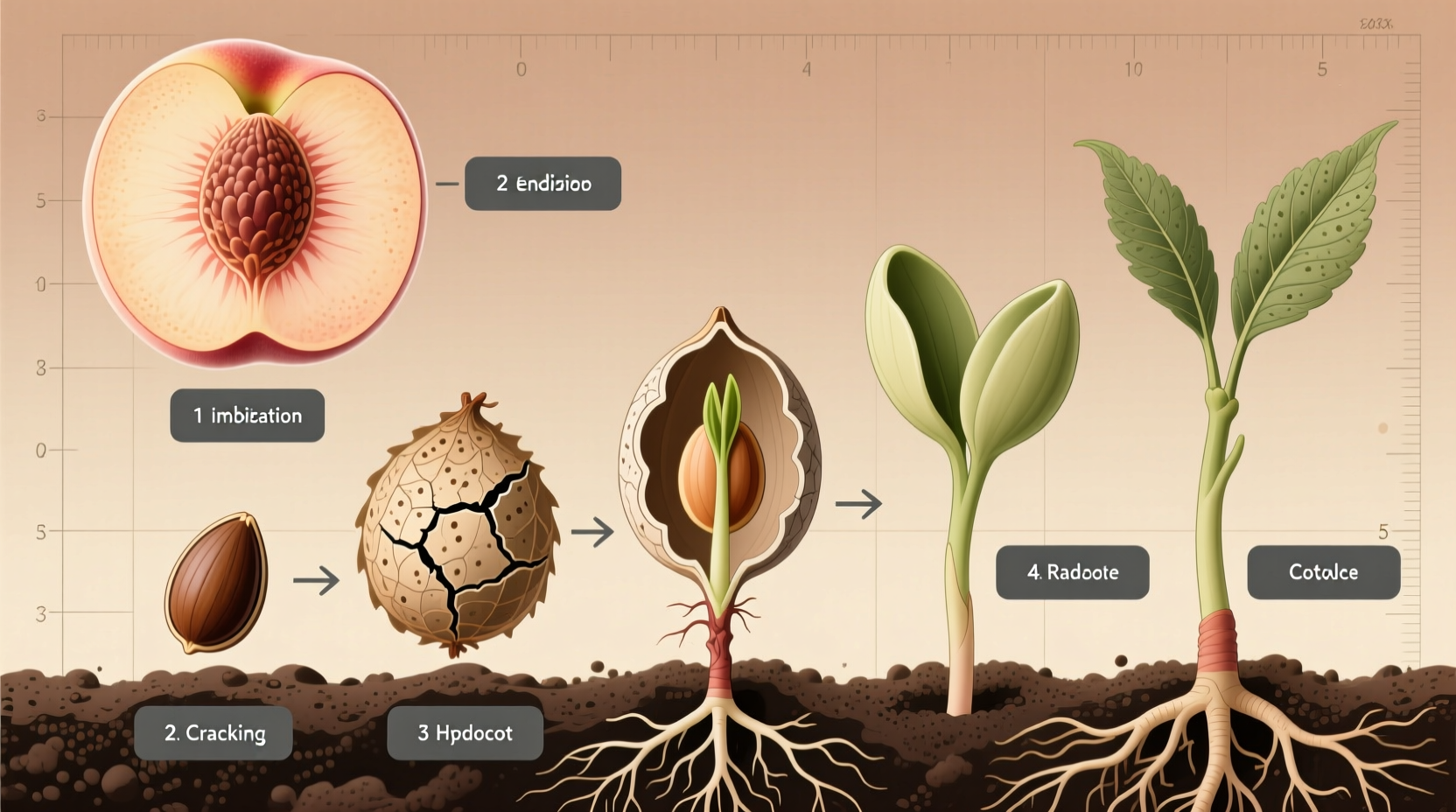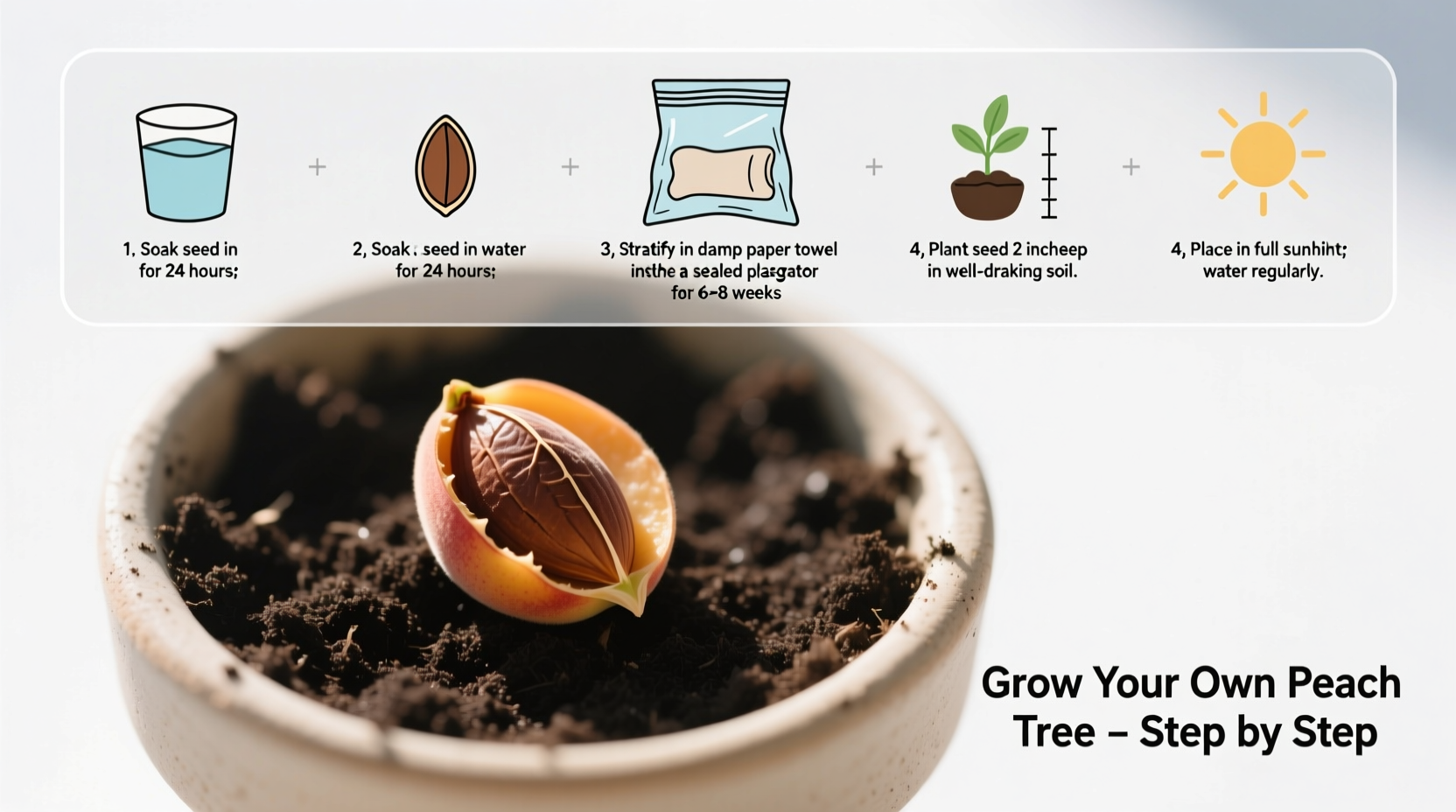Growing a peach tree from seed requires cold stratification for 8-12 weeks followed by planting in well-draining soil. While possible, most peach trees grown from seed won't produce fruit identical to the parent and take 3-4 years to bear fruit. Grafting onto established rootstock is recommended for reliable fruit production.
Your Step-by-Step Guide to Growing a Peach Tree from Seed
Many gardeners dream of growing their own peach tree from a simple seed, but the reality requires specific techniques and realistic expectations. Unlike popular belief, planting a peach pit doesn't guarantee you'll get the same delicious fruit as the original. This comprehensive guide walks you through the scientifically proven process while managing expectations about results.
Before You Begin: Critical Considerations
Understanding these key facts prevents disappointment later in your peach-growing journey:
- Peach trees grown from seed rarely produce fruit identical to the parent tree due to genetic variation
- It typically takes 3-4 years before a seed-grown peach tree bears fruit
- Cold stratification is non-negotiable for successful germination
- Most commercial peach varieties are grafted for consistent fruit quality
| Characteristic | Seed-Grown Tree | Grafted Tree |
|---|---|---|
| Time to Fruit | 3-4 years | 2-3 years |
| Fruit Quality | Unpredictable (may be inferior) | Identical to parent variety |
| Disease Resistance | Variable | Enhanced through rootstock selection |
| Low (50% different from parent) | High (exact clone) |
This comparison from the University of Georgia Cooperative Extension demonstrates why commercial growers prefer grafting. Your seed-grown tree might produce excellent fruit, but statistically, it's more likely to yield smaller, less flavorful peaches.
The Complete Growing Process: From Pit to Seedling
Step 1: Selecting and Preparing the Perfect Peach Pit
Start with a fresh, locally grown peach during summer harvest season. Commercial peaches often come from grafted trees, but the seed inside carries different genetics. Remove the pit carefully without cracking it, then clean off all fruit residue. Let the pit air-dry for 2-3 days at room temperature.
Step 2: Cold Stratification (The Critical Step)
Peach seeds require a period of cold, moist conditions to break dormancy. This mimics winter conditions they'd experience in nature. Here's the proper method:
- Wrap the clean, dry pit in a slightly damp paper towel
- Place in a sealed plastic bag, removing excess air
- Store in refrigerator (33-45°F / 1-7°C) for 8-12 weeks
- Check weekly for mold or premature sprouting
- Replace paper towel if it dries out or becomes moldy
The Utah State University Extension confirms that insufficient cold treatment is the most common reason for failed germination. Don't skip this crucial step!

Step 3: Planting Your Stratified Seed
Once you see the pit beginning to split open (usually after 8+ weeks), it's ready for planting:
- Use a 6-8 inch pot with drainage holes
- Fill with well-draining potting mix (50% potting soil, 50% perlite)
- Plant the pit 2-3 inches deep, pointed end up
- Water thoroughly but avoid waterlogging
- Place in a warm location (70-85°F / 21-29°C)
Germination typically occurs within 2-8 weeks after planting. Keep soil consistently moist but not soggy during this critical period.
Timeline: What to Expect After Planting
| Time Period | Development Stage | Care Requirements |
|---|---|---|
| Weeks 1-4 | Root development | Keep soil moist, warm temperatures |
| Weeks 4-8 | Shoot emergence | Bright indirect light, consistent moisture |
| Months 2-6 | Seedling establishment | Gradual introduction to direct sun, regular watering |
| Year 1 | Vigorous growth | Protect from extreme cold, balanced fertilizer |
| Years 2-3 | Branch development | Pruning for structure, pest monitoring |
| Years 3-4 | Potential flowering | Proper winter chilling, nutrient management |
Common Challenges and Solutions
Why Your Peach Seed Might Not Germinate
Based on data from the Oregon State University Extension Service, these are the top reasons for failed germination:
- Insufficient cold stratification - Less than 8 weeks typically yields poor results
- Dry storage conditions - Seeds need consistent moisture during cold treatment
- Old seeds - Fresh pits have significantly higher germination rates
- Temperature fluctuations - Inconsistent refrigerator temperatures disrupt the process
When to Consider Grafting
If your seedling reaches 1/4 inch in diameter (usually in year 2), grafting becomes an option. The University of Illinois Extension recommends grafting between February and April when the tree is still dormant. This process transfers a bud or branch from a known fruiting variety onto your seedling rootstock, combining the hardiness of your seedling with the reliable fruit production of established varieties.
Setting Realistic Expectations for Home Gardeners
Growing a peach tree from seed works best as an educational project or for developing rootstock. For reliable fruit production, most horticulturists recommend purchasing grafted trees from reputable nurseries. However, if you're gardening in a region where commercial varieties struggle, your seedling might develop valuable local adaptations.
Remember that peach trees require specific chilling hours (typically 600-900 hours below 45°F/7°C) to produce fruit. Consult your local extension office to determine if your climate meets these requirements before investing years in growing your seedling.











 浙公网安备
33010002000092号
浙公网安备
33010002000092号 浙B2-20120091-4
浙B2-20120091-4